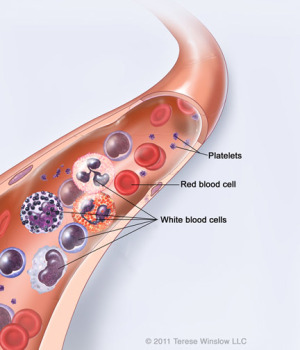About Leukemia
Leukemia is a cancer of the blood. Leukemia cells are sick immune blood cells that do not work properly and crowd out healthy blood cells. Leukemias are the most common childhood cancers representing one-third of all cancer diagnoses in children. Childhood leukemia can be chronic (slow growing) or acute (fast growing).
Chronic forms include chronic myelogenous leukemia (CML) affecting 1 in 1 million children, and chronic lymphocytic leukemia (CLL) which is very rare in children. Juvenile myelomonocytic leukemia (JMML) is a slow-growing blood cancer seen mostly in children under the age of 4 and accounts for 1-2% of all childhood leukemias.
Acute leukemias include:

Bone marrow is a factory where our blood is made deep inside our bones. It makes red blood cells (which carry oxygen and nutrients through the body), white blood cells (which fight germs and infections) and platelets (which help stop bleeding).
Leukemia starts in the bone marrow, the spongy internal part of bones where new blood is made. It starts when a single, young, white blood cell called a "blast" develops a series of mistakes or mutations that allow it to multiply uncontrollably. Eventually, blasts take over the bone marrow and crowd out normal blood cells. One blast soon generates billions of other blasts, with a total of about a trillion (one million times one million) leukemia cells typically present in the body at the time of diagnosis.
Join our mailing list
Stay up to date on the latest news, research breakthroughs and stories of hope.
